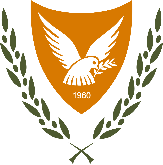Lefkara lace / (Αριθ. εγγραφής 103384)
[ απλή προβολή ]
| 000 -LEADER | |
|---|---|
| fixed length control field | 04247naa a2200253 a 4500 |
| 001 - CONTROL NUMBER | |
| control field | 103384 |
| 003 - CONTROL NUMBER IDENTIFIER | |
| control field | CY-NiDAL |
| 005 - DATE AND TIME OF LATEST TRANSACTION | |
| control field | 20250414160530.0 |
| 008 - FIXED-LENGTH DATA ELEMENTS--GENERAL INFORMATION | |
| fixed length control field | 181024s ko a 000 |engd |
| 040 ## - CATALOGING SOURCE | |
| Language of cataloging | gre |
| Original cataloging agency | CY-NiDAL |
| 040 ## - CATALOGING SOURCE | |
| Original cataloging agency | XX-XxUND |
| Transcribing agency | Βιβλιοθήκη Τμήματος Αρχαιοτήτων |
| 100 1# - MAIN ENTRY--PERSONAL NAME | |
| Personal name | Κτορί, Μαρία |
| Relationship | aut |
| 9 (RLIN) | 185192 |
| 245 10 - TITLE STATEMENT | |
| Title | Lefkara lace / |
| Statement of responsibility, etc. | Maria Ktori : Educational approaches to ICH in Cyprus.. |
| 260 ## - PUBLICATION, DISTRIBUTION, ETC. | |
| Place of publication, distribution, etc. | Seoul Korea: |
| Name of publisher, distributor, etc. | National Folk Museum of Korea, |
| Date of publication, distribution, etc. | 2017. |
| 300 ## - PHYSICAL DESCRIPTION | |
| Extent | 77-92 : |
| Other physical details | ill. |
| 490 0# - SERIES STATEMENT | |
| Series statement | ; |
| Volume/sequential designation | vol. 12, 2017 |
| International Standard Serial Number | 1975-3586 |
| 500 ## - GENERAL NOTE | |
| General note | In ιnternational of ιntanglible heritage vol 12.2011. |
| 500 ## - GENERAL NOTE | |
| General note | The Lefkaritiko embroidery is a handmade embroidery from Pano Lefkara and Kato Lefkara in Cyprus. Typical features are the azure, the clogs with raised stitches, crochet trim, white, brown, effervescent colors and complex geometric motifs. [1] In 2009, Lebanese handmade embroidery was included in the UNESCO List of Intangible Cultural Heritage Lists. Lefkara is the typical type of embroidery art in Cyprus. It belongs to the category of white Cypriot embroidery. It is the evolution of an earlier type, called "asproplumi". The main siphons of the Asproplumies survive in Lefkaritiko. New stitches and patterns are added depending on the capability and creativity of the embroiderer. The Lefkarians soon came to a higher level of quality because of the competition that existed between women, since they were considered to be a central part of their dowry. Every girl had to have an extensive collection ready for her wedding day. In this way the traditional elements passed from mother to daughter. Many women practiced embroidery and as a profession. The women's headquarters in Lefkara, the "plumaris", organized their production from home. The emperors, who were men from Lefkara, were traders and traveled all over Europe to Scandinavia. According to tradition, in the 15th century, Leonardo da Vinci visited Cyprus and took a Lefkarian with him back to Italy, which today decorates the cathedral of Milan. The first Lefkari embroidery was made using the white cotton local handmade weavers of Cyprus. It is a combination of up and down embroidery. The "tagiades", the large cut embroidery, are the most significant addition of decorative designs in lace benes, in "pockets", glitter, lime designs. Their name comes from the Italian "punto tajliato", a kind of cut that was made in Italy in the 16th century. Today, in a recent study by the Cyprus Handicraft Service for the Lefkaritic Embroidery, patterns that can be combined to create Lefkara embroidery are beyond 650 designs. Later, they used the hand-made linen in natural color that they wore in the Zodia area. They embroidered it with a linen thread. Currently imported natural linen is used. The stitches they used were the "wig" (wobbly), the wobble or otherwise "wobble", the climb, the root and the tie. "The rivers" are the most distinctive kind of decoration in Lefkara embroidery. They are done by removing and cutting the threads, creating triangular zigzags, the "arches". They decorated them with raised and cut patterns. The central plan of the arch was mainly cut. They filled it with the lace technique directly into the cloth. By joining two vaults, they created other complex designs, the "apples". Depending on their central decoration, they were given the same name. Other designs were tibiado, holland, sprouts, palm and mauled mauwoo in various combinations. All drawings are framed by frayed patterns, stitches and fabrication. Their finishes are made with various types of lace, such as tsipi, clossi, tick and bell clown. The oldest and most interesting is the bony clown. Moving the threads that had the bobbin of coats, they threw the threads in various combinations and finished it with frocks "the felts" |
| 650 #4 - SUBJECT ADDED ENTRY--TOPICAL TERM | |
| Topical term or geographic name entry element | Embroidery |
| Geographic subdivision | Cyprus. |
| 9 (RLIN) | 177924 |
| 650 #4 - SUBJECT ADDED ENTRY--TOPICAL TERM | |
| Topical term or geographic name entry element | embroidery lefkaritiko |
| Geographic subdivision | Cyprus |
| 9 (RLIN) | 177923 |
| 650 #4 - SUBJECT ADDED ENTRY--TOPICAL TERM | |
| Topical term or geographic name entry element | κέντημα λευκαρίτικο |
| Geographic subdivision | Λεύκαρα Κύπρος |
| 9 (RLIN) | 184944 |
| 651 #4 - SUBJECT ADDED ENTRY--GEOGRAPHIC NAME | |
| Geographic name | Λεύκαρα, Κύπρος |
| General subdivision | Κέντημα |
| 9 (RLIN) | 185491 |
| 942 ## - ADDED ENTRY ELEMENTS (KOHA) | |
| Source of classification or shelving scheme | Dewey Decimal Classification |
| Koha item type | |
Δεν υπάρχουν διαθέσιμα τεκμήρια.
